Ask Learn
Preview
Ask Learn is an AI assistant that can answer questions, clarify concepts, and define terms using trusted Microsoft documentation.
Please sign in to use Ask Learn.
Sign inThis browser is no longer supported.
Upgrade to Microsoft Edge to take advantage of the latest features, security updates, and technical support.
Note
Access to this page requires authorization. You can try signing in or changing directories.
Access to this page requires authorization. You can try changing directories.
At this step we have On-Premise Active Directory, integrated and federated with Azure AD using AD Connect and ADFS. We have an Exchange environment, integrated with Exchange Online. We have Multi-factor authentication for stronger security in place. What else do we need? Of course, we need to have a way to monitor that hybrid identity solution and react if something goes wrong. The best solution for that purpose is Azure AD Connect Health, which is included in Azure AD Premium. If can show the status of ADFS environment, On-Premise AD, Azure AD sync status and send notifications to administrators if alerts appear.
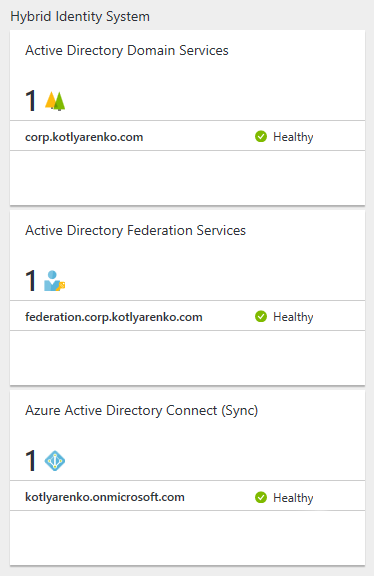
To deploy and configure Azure AD Connect Health, I will use the following:
Check the official installation manual.
Login to Azure Portal and click New -> Security and Identity -> Azure AD Connect Health 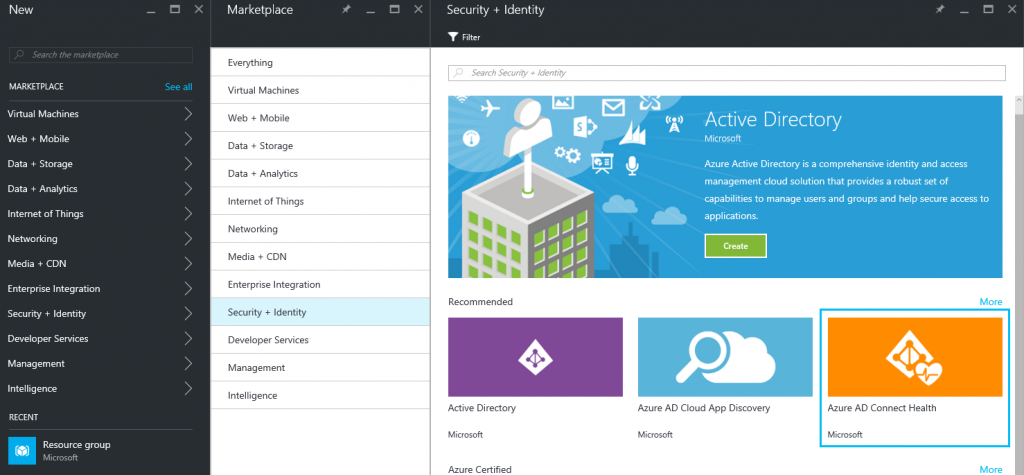
You will see the directory, where you have Global Administrator rights and Azure AD Premium mode activated, click Create.
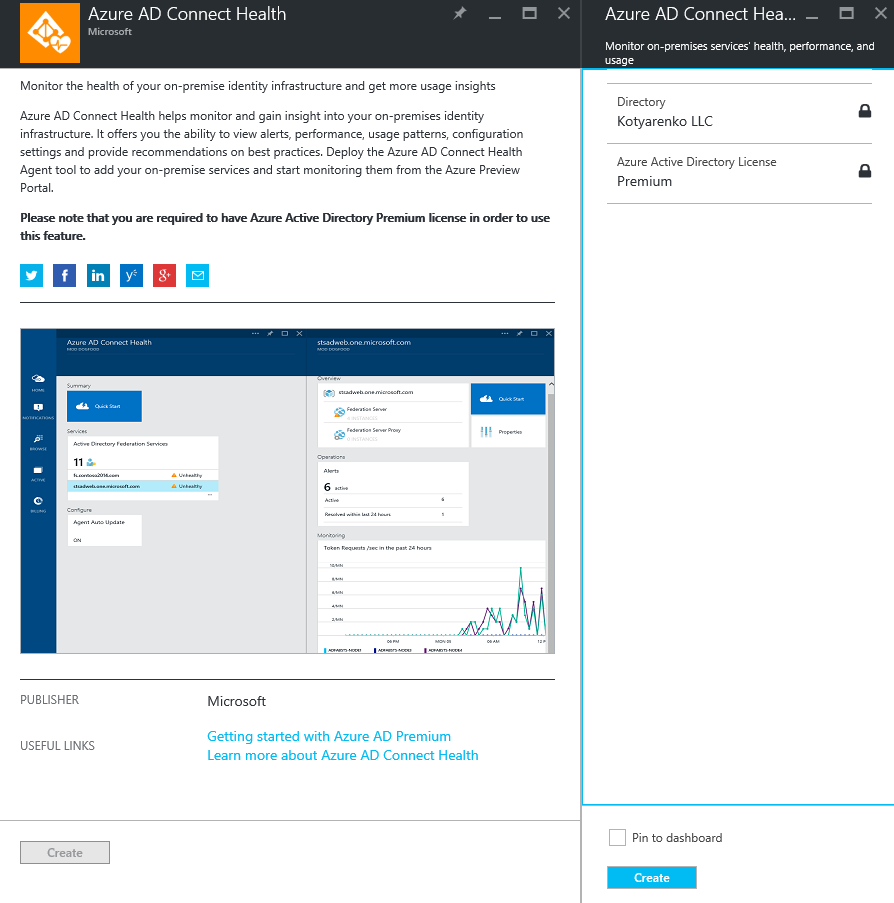
Then click More Services -> Azure AD Connect Health to open Azure AD Connect Health menu. Click Quick Start and download 3 installers:
Next step - you need to install Azure AD Connect Health agent for ADDS on every domain controller in your On-Premise AD.
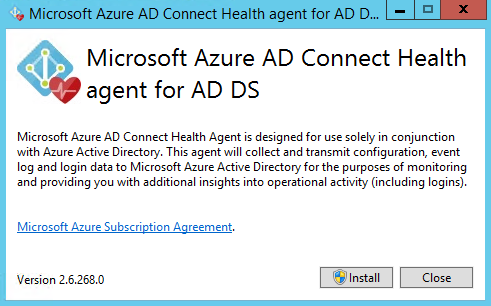
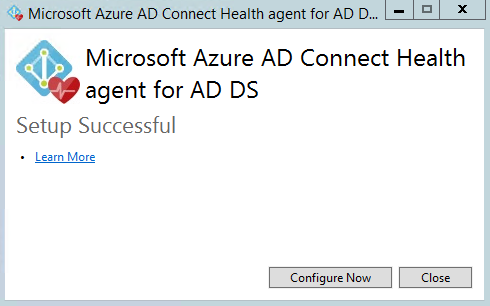 Configuration script will be launched after the installation. You will need to provide Azure AD Global Administrator credentials.
Configuration script will be launched after the installation. You will need to provide Azure AD Global Administrator credentials.
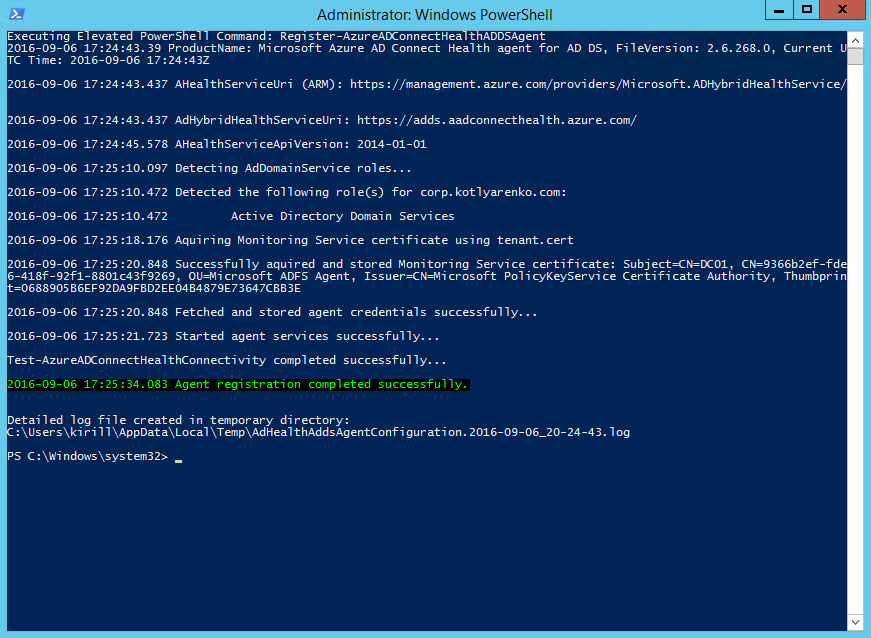 Repeat this procedure on every domain controller.
Repeat this procedure on every domain controller.
Now you need to install Azure AD Connect Health agent for ADFS on every ADFS Server and ADFS Proxy.
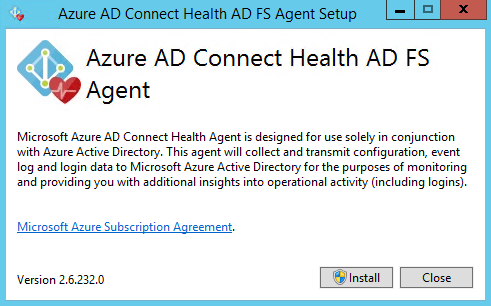
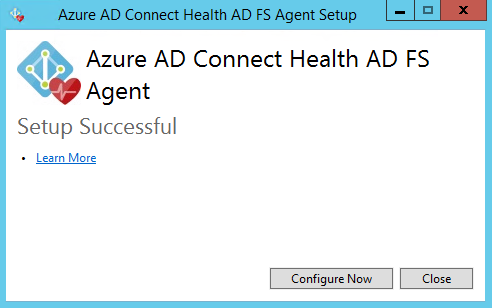 On ADFS Gateway you shouldn't see any errors or warning:
On ADFS Gateway you shouldn't see any errors or warning:
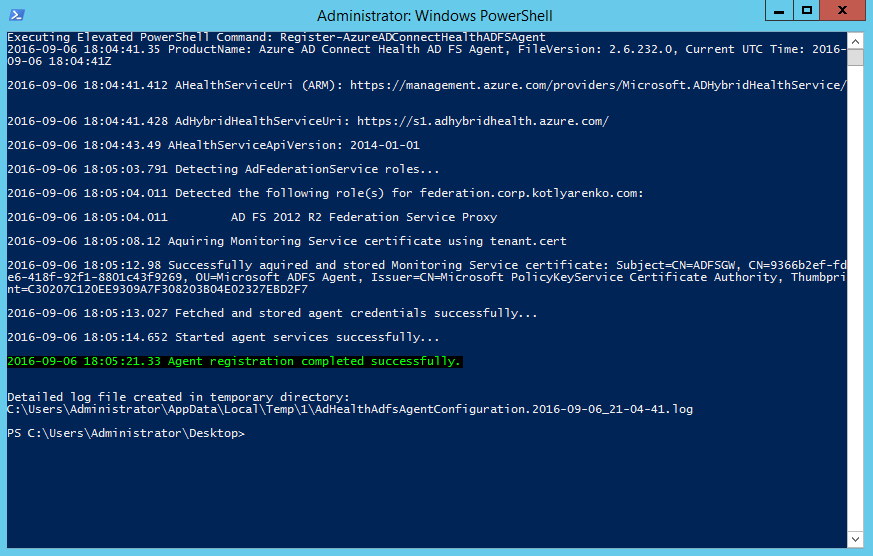
But on ADFS Servers you probably will see a warning that ADFS Auditing is not enabled correctly: 
To fix that, run this command on every ADFS Server with elevated admin credentials:
auditpol.exe /set /subcategory:"Application Generated" /failure:enable /success:enable  And then open ADFS Management Console, click Edit Federation Service Properties and check Success Audits and Failure Audits.
And then open ADFS Management Console, click Edit Federation Service Properties and check Success Audits and Failure Audits.
Next step maybe not required in your case. Open services.msc on your Azure AD Connect server and check if Azure AD Connect Health Sync Insights Service and Azure AD Connect Health Sync Monitoring Service presented there:
 If they are missing, then it means that Azure AD Connect Health Sync agent wasn't available in Azure AD Connect yet when you've installed it. To solve this, download the latest installer of Azure AD Connect and run the installer. Choose Repair:
If they are missing, then it means that Azure AD Connect Health Sync agent wasn't available in Azure AD Connect yet when you've installed it. To solve this, download the latest installer of Azure AD Connect and run the installer. Choose Repair: 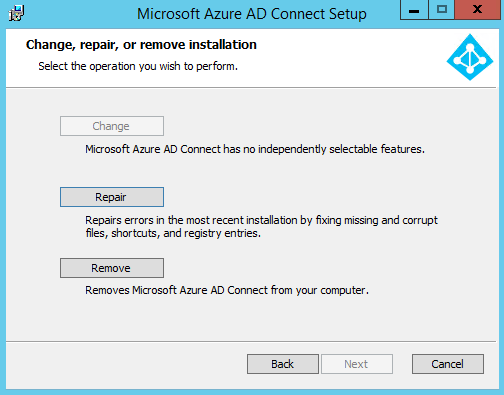 After the installer will complete, choose Customize synchronisation options:
After the installer will complete, choose Customize synchronisation options: 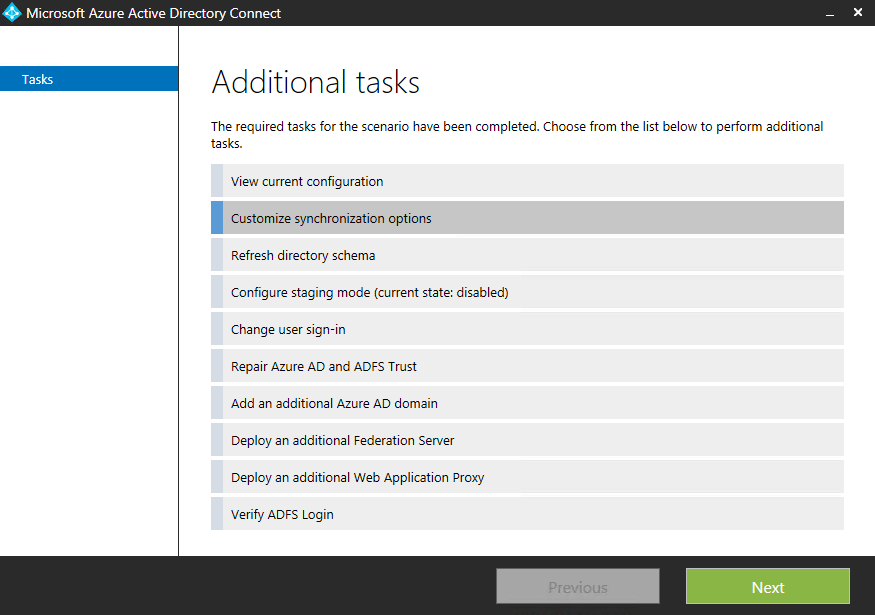
Provide Global Admin credentials and click Next next next, we don't need to change anything here. You will see that Azure AD Connect Health agent for sync is being installed:
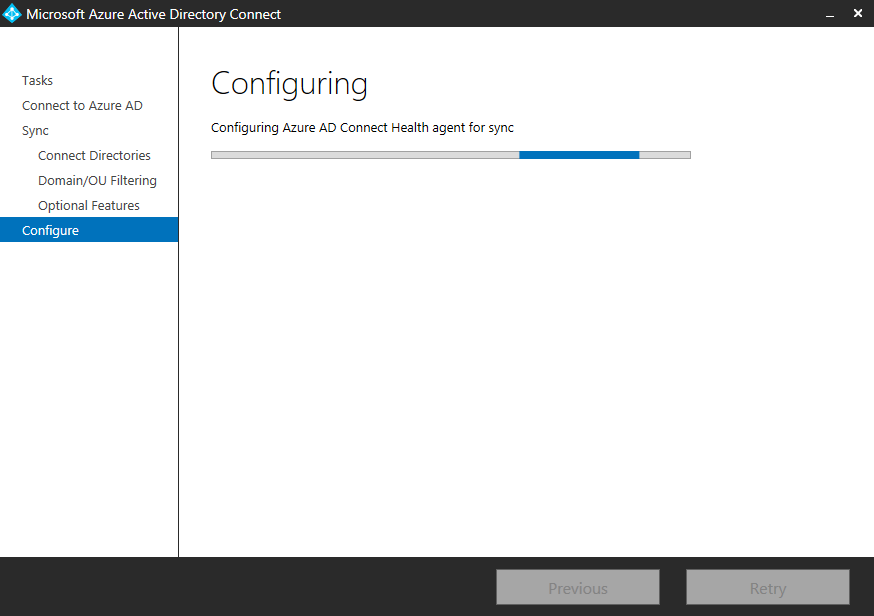
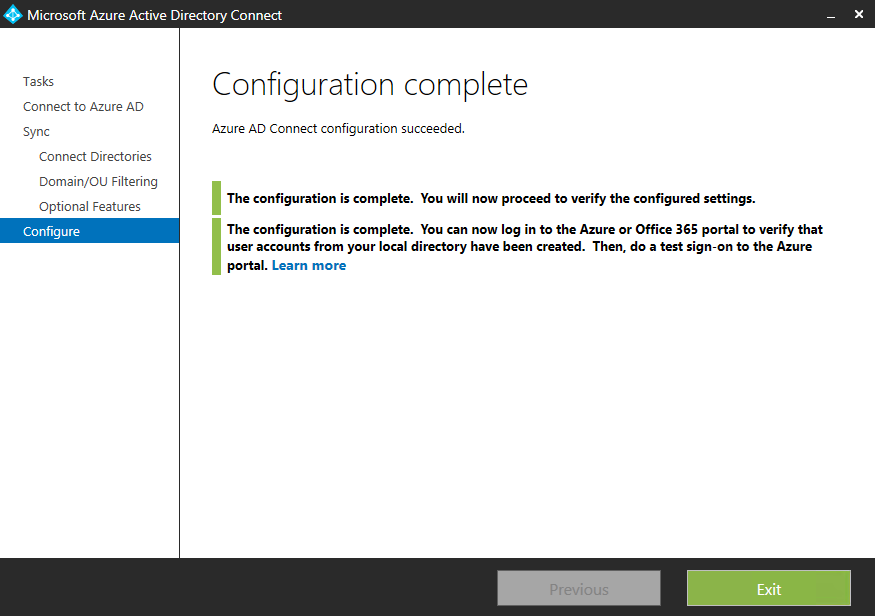 Installation complete!
Installation complete!
Return back to Azure Portal and open Azure AD Connect Health menu. You should see 3 panes - Active Directory Federation Services, Azure Active Directory Connect and Azure Active Directory Domain Services. 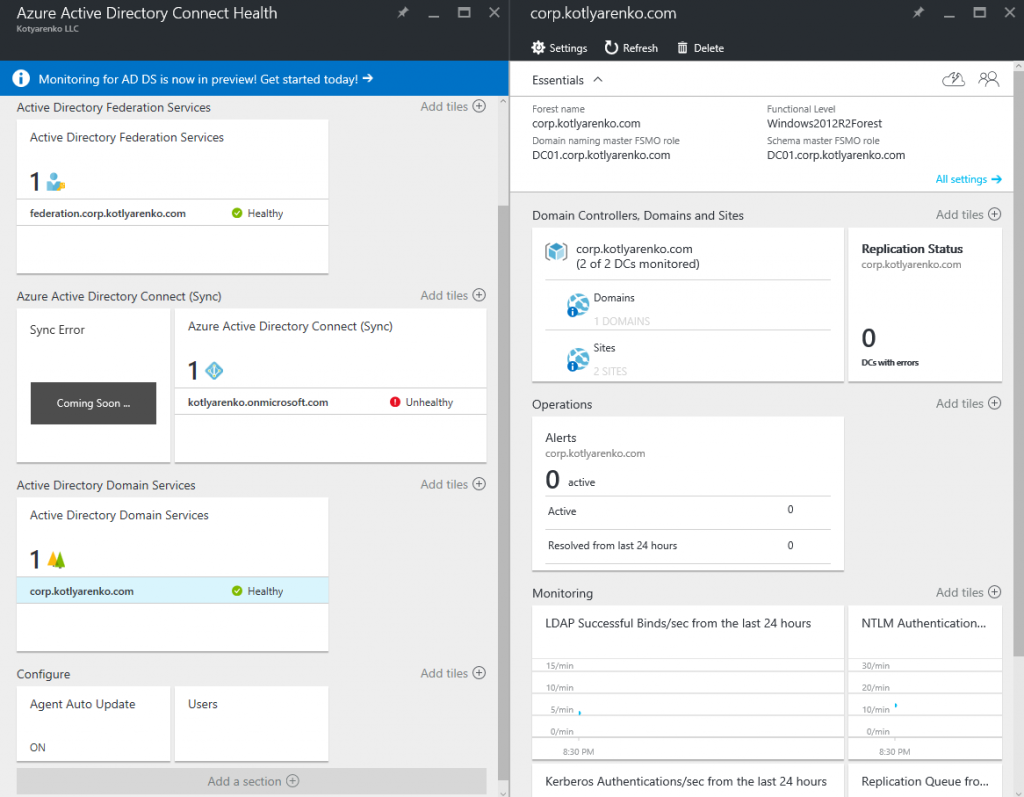 Click Azure Active Directory Connect -> Settings and change the switch to "On" to enable to evaluate all alerts.
Click Azure Active Directory Connect -> Settings and change the switch to "On" to enable to evaluate all alerts.
In Alert menu you can configure e-mail notifications:
 You can also assign access (including Read-only) to Azure AD Connect Health for other users in the current Azure AD:
You can also assign access (including Read-only) to Azure AD Connect Health for other users in the current Azure AD:
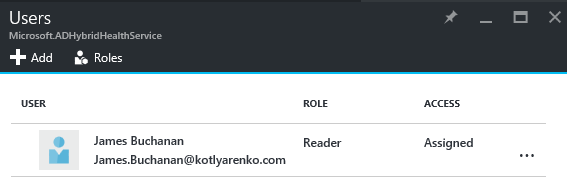 That's all. Enjoy the statuses of your On-Premise AD, Azure AD and ADFS and click any status if you need more details.
That's all. Enjoy the statuses of your On-Premise AD, Azure AD and ADFS and click any status if you need more details.

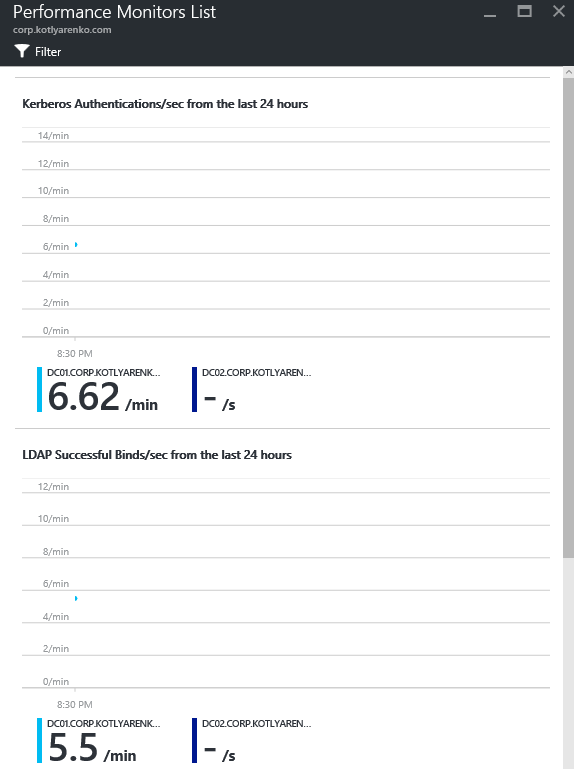
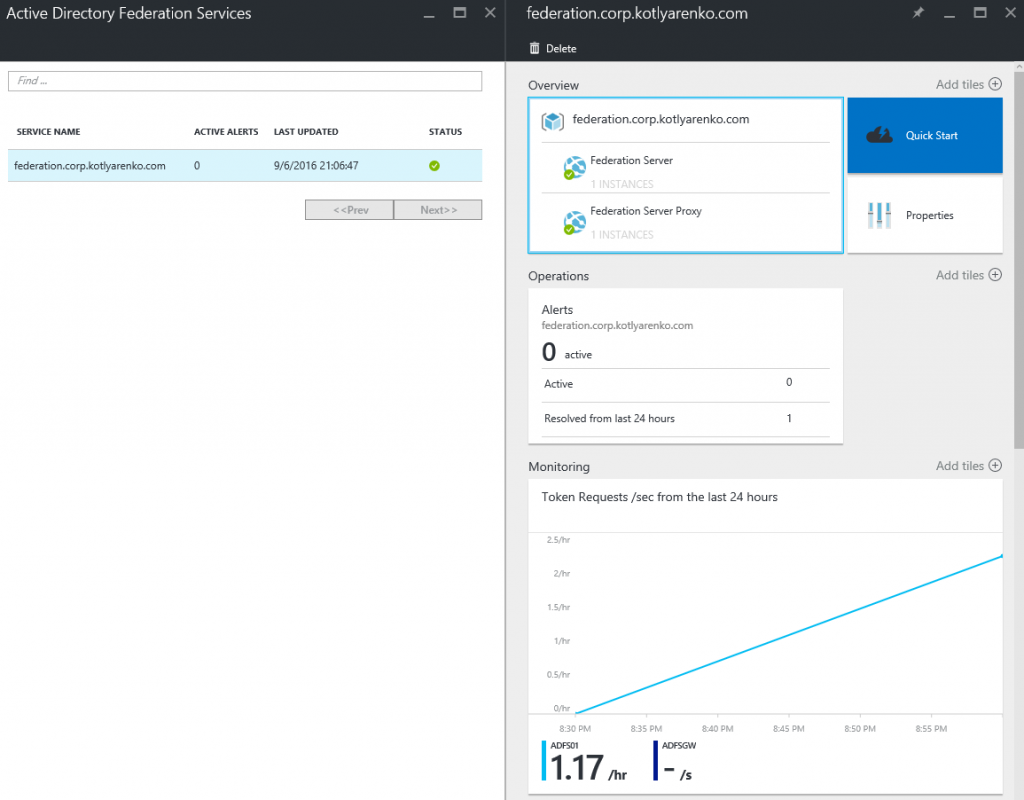
This post is a part of the Hybrid Cloud Identity series:
Part 1 - Integration of On-Premise AD and Azure AD using Azure AD Connect and ADFS Part 2 - Hybrid Exchange Part 3 - Azure Multi-factor Authentication
Part 4 - Azure AD Connect Health (you are here).
Ask Learn is an AI assistant that can answer questions, clarify concepts, and define terms using trusted Microsoft documentation.
Please sign in to use Ask Learn.
Sign in